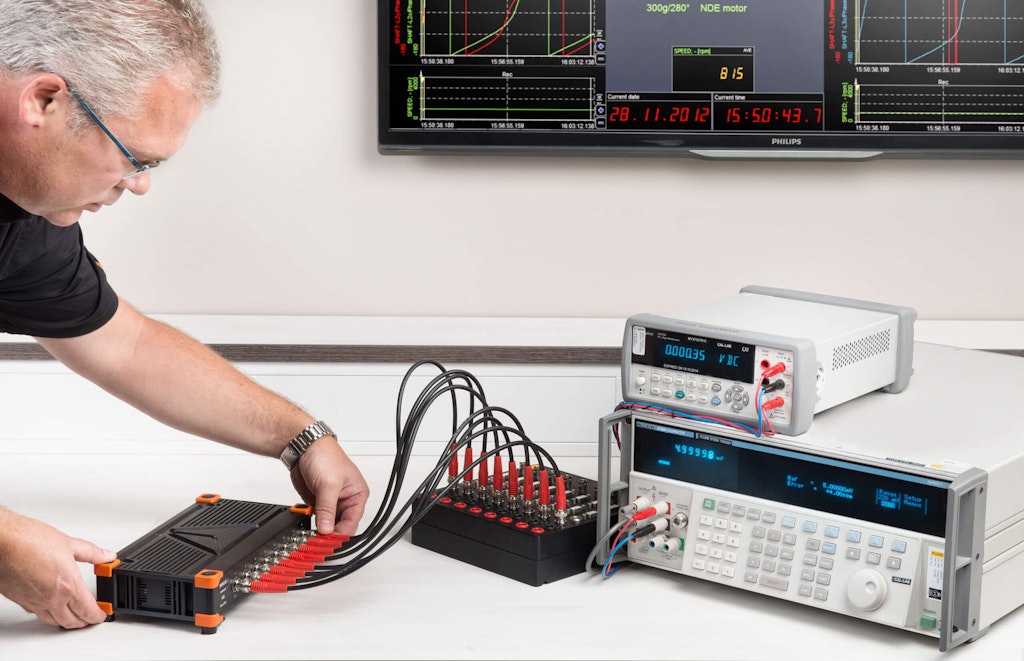Unlocking Insights: The Power of Modern Data Acquisition Systems
Unlocking Insights: The Power of Modern Data Acquisition Systems
Blog Article

In today's data-driven world, the ability to gather and analyze information is more crucial than ever. From environmental monitoring to industrial automation, Data Acquisition Systems play a pivotal role in capturing real-time data that drives decision-making. These systems facilitate the transformation of raw data into actionable insights, allowing organizations to enhance productivity, improve safety, and optimize performance across various sectors.
As technology continues to evolve, modern Data Acquisition Systems are becoming increasingly sophisticated. They integrate advanced sensors, connectivity options, and powerful analytics tools, enabling users to collect vast amounts of information efficiently. By leveraging these systems, businesses can unlock new opportunities for innovation and growth, ensuring they stay ahead in a competitive landscape. Understanding the mechanisms behind these systems is essential for anyone looking to harness the full potential of data.
Understanding Data Acquisition Systems
Data Acquisition Systems, often abbreviated as DAS, play a crucial role in capturing and analyzing data from various sources and environments. These systems convert physical phenomena such as temperature, pressure, and electrical signals into a digital format that can be easily processed and interpreted. With the rapid advancement of technology, modern data acquisition systems have become more sophisticated, allowing for real-time data collection and analysis, which is essential across numerous industries.
The architecture of a data acquisition system typically includes sensors, signal conditioning units, data converters, and processing units. Sensors are responsible for detecting physical changes, while signal conditioning units enhance the quality of the signal received from the sensors. Data converters, such as analog-to-digital converters, transform these signals into a format suitable for further processing. This structured design allows for a seamless workflow from data collection to meaningful insights, making it easier for organizations to make informed decisions based on accurate information.
In diverse fields such as healthcare, manufacturing, environmental monitoring, and research, the application of data acquisition systems is invaluable. They enable organizations to gather critical data efficiently, monitor systems in real-time, and optimize processes by providing insights into performance and potential issues. By harnessing the power of these systems, companies can enhance productivity, improve safety, and drive innovation, making data acquisition an essential component of modern operational strategies.
Key Technologies Driving Data Acquisition
The landscape of data acquisition systems is significantly shaped by advancements in sensor technology. Modern sensors are capable of rapidly capturing a wide array of data types, from temperature and pressure to complex biometric signals. These sensors are becoming more accurate, robust, and cost-effective, enabling organizations to deploy them in varied environments. The integration of smart sensors, equipped with built-in processing capabilities, further enhances the efficiency of data acquisition, allowing for immediate analysis and feedback.
Data connectivity plays a crucial role in the evolution of data acquisition systems as well. The rise of the Internet of Things has facilitated real-time data transmission from sensors to centralized systems. Technologies such as wireless communication protocols, including Bluetooth, Wi-Fi, and cellular networks, ensure that data is transferred securely and efficiently. This seamless connectivity not only improves the timeliness of data collection but also expands the possibilities for remote monitoring and control, enabling organizations to respond swiftly to emerging situations.
Another critical technology driving data acquisition systems is advanced data analytics and machine learning. As organizations gather massive volumes of data, the ability to analyze this information has become essential. Machine learning algorithms can process data sets to identify patterns, make predictions, and generate insights that inform decision-making. By integrating analytics into data acquisition systems, organizations can unlock deeper insights, enhance operational efficiencies, and drive innovation across various sectors.
Applications and Benefits of Modern Systems
Modern Data Acquisition Systems find extensive applications across various fields, including industrial automation, environmental monitoring, and healthcare. In industrial settings, these systems enable real-time monitoring and control of production processes, leading to increased efficiency and reduced downtime. For environmental applications, Data Acquisition Systems gather data from sensors to monitor air and water quality, helping organizations comply with regulations and protect natural resources. In healthcare, these systems are vital for collecting patient data, enhancing diagnostics, and improving the overall quality of care.
Compare Options
The benefits of implementing modern Data Acquisition Systems are numerous. They provide enhanced data accuracy and reliability, which is crucial for informed decision-making. By automating data collection processes, organizations can significantly reduce human error and increase the speed of data processing. This not only leads to more precise analytics but also allows teams to focus their efforts on interpreting results rather than gathering data manually.
Moreover, modern Data Acquisition Systems support scalability and flexibility, accommodating the evolving needs of organizations. With the ability to integrate seamlessly with other technologies and platforms, these systems enable businesses to adapt to changing requirements without overhauling their existing infrastructure. Ultimately, the adoption of modern Data Acquisition Systems empowers organizations to harness the full potential of their data, leading to greater insights and improved operational performance.
Report this page